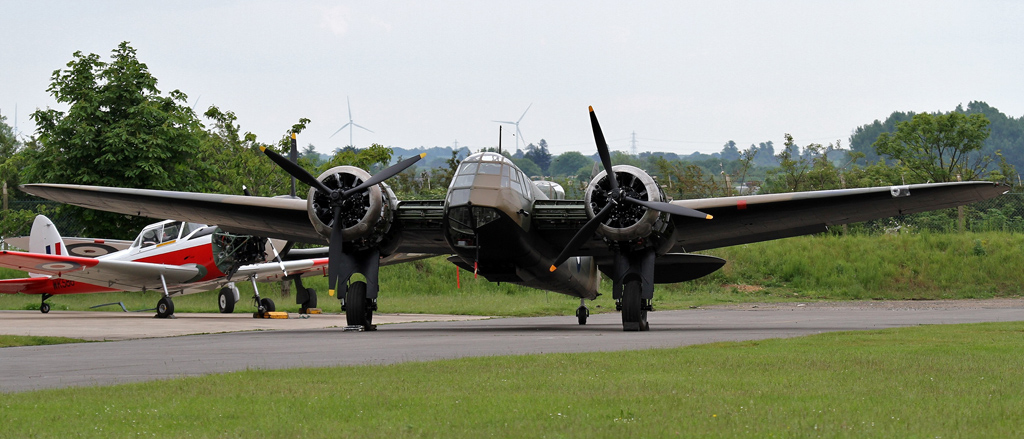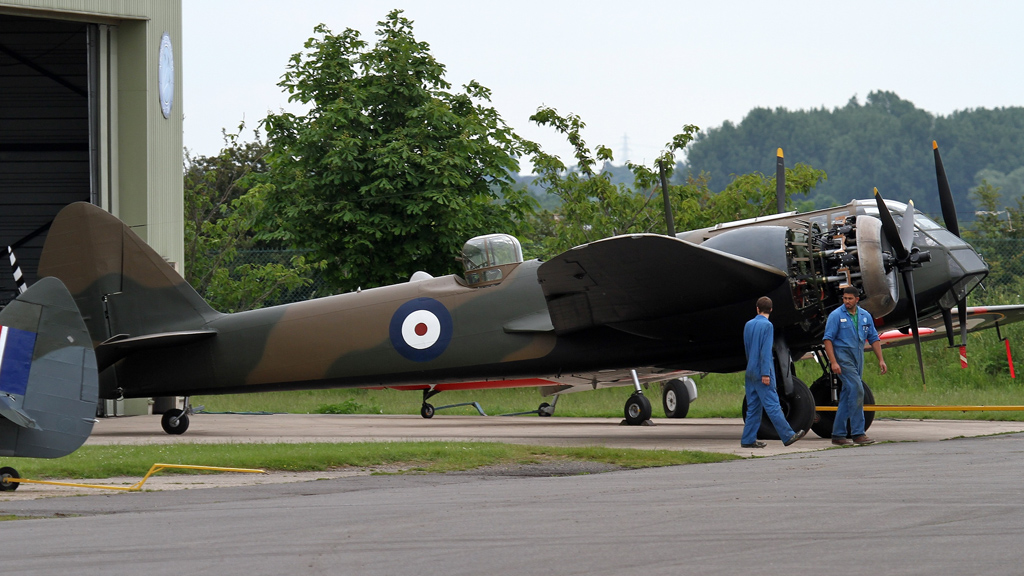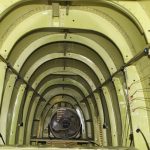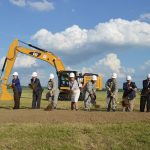As reported by Global Aviation Resource, on May 30th at Imperial War Museum Duxford the Aircraft Restoration Company’s Bristol Blenheim appeared in public as a complete aircraft for the first time since its long-term rebuild began in the summer of 2003.
ARCo recovered their first Blenheim from Canada in the 1970s (RCAF serial 10038). The airframe was originally license-built by Fairchild Canada as a Bolingbroke Mk.IVT; essentially a Blenheim Mk.IV with some modifications and North American hardware/instrumentation. ARCo worked on the aircraft for twelve years, restoring her as a Blenheim Mk.IV (registered as G-MKIV). She made her first flight in May 1987, but was involved in a touch-and-go landing accident at Denholm Airfield just a month after and written off, miraculously without loss of life. Undeterred, her restoration crew determined to get another Blenheim back in the air. They obtained a further Canadian-built Bolingbroke IV (RCAF 10201), and managed to get her flying again in just five years as G-BPIV; their previous experience helping greatly to speed up the rebuild progress. She flew again in June 1993; the world’s only flying Blenheim was a huge hit on the air show circuit!
Unfortunately, the Blenheim crash-landed again in August 2003; this time at Duxford. While the aircraft suffered considerable damage, she wasn’t broken beyond repair. The Blenheim’s crew didn’t give up on her and formed a trust to ensure her continued operation in the UK. They contracted ARCo to provide two full-time engineers to support the restoration project undertaken by Blenheim Duxford Ltd. (and supported by The Blenheim Society). The Blenheim has undergone a thorough rebuild inside Duxford’s Hangar 3, and more recently in ARCo’s workshop. Interestingly, the team has decided to rebuild the aircraft to Mk.I standard. The bulk of the aircraft is nearly identical to a Mk.IV, except for the forward fuselage which is radically different. The Mk.I is essentially extinct (as are British-built Blenheim IVs, with no complete examples known to exist), but a few forward fuselages survive. One of these ended up at Duxford a few decades ago. Ralph Nelson, a Bristol employee, had converted it into a peculiar automobile during 1946, using the chassis and power train from an Austin 7 (for images of the “car”, please click HERE). The Mk.I fuselage comes from Blenheim L6739, a Battle of Britain night-fighter veteran. The Blenheim Society obtained the “car” intending to rebuild it into a fully operational nose section for a potential swap with the Mk.IV nose. The team had already begun this process before the 2003 accident, so it seemed logical to blend what they had already completed into G-BPIV’s restoration once that began. They rolled out the freshly restored “Blenheim Mk.I” in night fighter camouflage just a few days ago, and will eventually mark her as L6739. ARCo ran one of the aircraft’s Bristol Mercury engines on May 23rd, and expect to run the other very soon. If all goes well, she will be flying again very soon and delighting air show audiences again across the UK. We at WarbirdsNews wish the Blenheim Society and ARCo much luck with this endeavor, and long may the Blenheim fly!
Photographs courtesy of David Whitworth. With thanks to David Whitworth and the Staff of Global Aviation Resource.

























